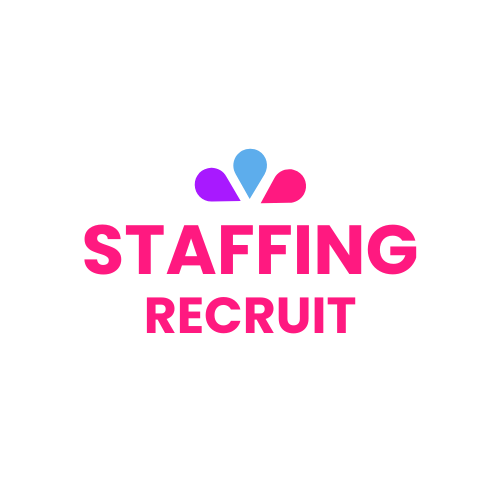Introduction
The healthcare industry is at a crucial point where every hiring decision is important. One wrong hire can have a negative impact on the organisation, affecting the quality of patient care, team dynamics, and financial stability. Research shows that 95% of organisations admit to making bad hires every year, costing them up to 30% of the employee’s first-year earnings.
In healthcare, where lives are at stake, the consequences of poor hiring decisions are even greater. A bad hire doesn’t just mean losing money—it can endanger patient safety, disrupt care delivery, and harm an institution’s reputation. The average cost of $17,000 per bad hire, along with additional recruiting and onboarding expenses of $4,700, highlights the financial burden healthcare organisations face.
Having a strong hiring process is not just a necessary task—it’s a strategic requirement. Healthcare organisations must prioritise careful evaluation of candidates, assessment of cultural fit, and thorough screening to protect their operations, uphold patient care standards, and maintain financial stability.
Understanding the Cost of a Bad Hire in Healthcare
The financial implications of a bad hire in healthcare settings extend far beyond the immediate recruitment expenses. Research indicates that healthcare organisations can lose up to 30% of an employee’s first-year earnings when dealing with an unsuccessful hire.
1. Recruitment and Advertising Costs
These are the expenses incurred during the hiring process to attract potential candidates:
- Job board postings and premium listings: $500-$5,000
- Professional recruitment agency fees: 15-25% of annual salary
- Social media and targeted advertising: $1,000-$3,000
- Career fair participation: $2,500-$5,000
2. Staff Time Investment
This includes the time spent by various personnel involved in the hiring process:
- HR personnel hours for screening: 20-30 hours per position
- Department manager interview time: 10-15 hours
- Administrative processing: 8-12 hours
- Background checks and credential verification: $100-$500 per candidate
3. Training and Development Expenses
These are costs associated with bringing new hires up to speed:
- Orientation programs: $1,500-$3,000
- Clinical skills training: $2,000-$5,000
- Equipment and software training: $1,000-$2,500
- Mentorship program costs: 40-60 hours of senior staff time
4. Onboarding Resources
These are resources needed to integrate new employees into the organisation:
- Medical equipment and supplies: $5,000-$15,000
- Technology setup and access: $2,000-$4,000
- Uniform and safety gear: $500-$1,500
- Documentation and compliance training: $1,000-$2,000
5. Relocation and Compensation Costs
If a new hire is relocating for the job or if additional compensation is offered, these costs come into play:
- Moving allowances: $5,000-$10,000
- Sign-on bonuses: $2,000-$25,000
- Benefits enrollment costs: $2,000-$4,000
- Administrative processing fees: $500-$1,000
These figures become particularly significant when considering specialised healthcare roles. For instance:
Replacing a registered nurse can cost between $40,000 to $64,000, while replacing a physician might exceed $250,000.
Healthcare organisations must also account for productivity loss during the transition period. New hire productivity typically follows this pattern:
| Month Productivity Level 1-2 | 25% |
| 3-4 | 50% |
Indirect Costs of a Bad Hire
The hidden costs of a bad hire extend far beyond immediate financial implications, creating ripple effects throughout healthcare organisations. A single underperforming employee can disrupt established workflows and compromise team efficiency, resulting in a 30-40% drop in departmental productivity.
Strain on Team Dynamics
Team dynamics suffer significant strain when dealing with an incompetent colleague. Medical staff often need to compensate for errors or incomplete tasks, leading to:
- Increased stress levels among existing employees
- Higher absenteeism rates
- Decreased job satisfaction
- Reduced engagement in patient care
Damage to Employee Morale
The impact on employee morale proves particularly damaging in healthcare settings. Skilled professionals may seek employment elsewhere when forced to work alongside underperforming colleagues, triggering a cascade of resignations that can cost up to 150% of each departing employee’s salary.
Erosion of Brand Reputation
Brand reputation takes a substantial hit when bad hires interact with patients. Negative patient experiences spread quickly through:
- Online reviews
- Word-of-mouth referrals
- Social media platforms
- Community feedback
Healthcare organisations experiencing multiple bad hires often see a marked decline in patient trust, leading to decreased patient retention rates and difficulty attracting new talent. Research shows that organisations with reputation damage require 12-24 months to rebuild their brand image, resulting in long-term revenue loss and market share decline.
The Broader Impact on Healthcare Organisations
Bad hires create ripple effects throughout healthcare organisations that extend far beyond financial implications. The stakes are particularly high in healthcare settings where patient lives hang in the balance.
Patient Care Quality and Safety
- Medication errors due to inadequate skill levels
- Delayed response times in critical situations
- Inconsistent adherence to safety protocols
- Increased risk of hospital-acquired infections
- Compromised patient monitoring and documentation
A single incompetent healthcare worker can put numerous patients at risk. Research shows that medical errors rank as the third leading cause of death in the United States, with a significant percentage attributed to preventable human factors.
Organisational Goal Disruption
- Missed quality metrics and benchmarks
- Delayed implementation of new healthcare technologies
- Stalled expansion projects
- Inability to meet regulatory compliance deadlines
- Reduced capacity to handle patient volume
Healthcare organisations operating with subpar staff struggle to achieve strategic objectives, affecting everything from technological advancement to facility improvements.
Service Delivery and Patient Trust
- Declining patient satisfaction scores
- Increased complaint rates
- Longer wait times
- Communication breakdowns between departments
- Reduced referral rates from primary care physicians
Poor service delivery creates a domino effect – dissatisfied patients share negative experiences, leading to decreased trust in the healthcare facility. Studies indicate that 54% of patients would switch healthcare providers after just one negative experience. This issue is further compounded when considering the racial disparities in healthcare, which can lead to even worse outcomes for certain groups.
The impact on healthcare organisations becomes particularly acute when considering the competitive nature of modern healthcare. Facilities must maintain high standards across all operational aspects to retain patient trust and market share.
Tackling High Turnover Rates in Healthcare through Strategic Hiring Practices
The healthcare industry faces a critical challenge with employee retention. Recent data reveals a startling statistic: 50% of new healthcare hires leave their positions within the first six months. This revolving door of talent creates substantial operational disruptions and financial strain on healthcare organisations.
Several key factors drive these high turnover rates:
- Work-Life Balance Issues: Irregular shift patterns, long working hours, and limited flexibility in scheduling
- Professional Development Barriers: Insufficient training opportunities, limited career advancement paths, and lack of mentorship programs
- Workplace Environment Challenges: High-stress situations, physical demands, and emotional burnout
Healthcare organisations can address these challenges through targeted retention strategies:
- Structured Onboarding Programs: Dedicated mentorship assignments, clear performance expectations, and regular check-ins during first 90 days
- Career Development Initiatives: Skills enhancement opportunities, leadership development programs, and clear advancement pathways
- Workplace Culture Improvements: Regular team building activities, recognition programs, and support systems for stress management
These strategic approaches help create a more stable workforce, reducing the likelihood of early departures and strengthening organisational resilience.
Mitigating the Risks of Bad Hires: Best Practices for Recruitment in Healthcare Settings
Healthcare organisations can significantly reduce the risk of bad hires through strategic recruitment practices and comprehensive evaluation methods. A thorough screening process serves as the foundation for successful healthcare hiring.
Essential Components of an Effective Screening Process:
- Background verification spanning multiple jurisdictions
- License and certification validation
- Reference checks from previous healthcare employers
- Drug screening and medical examinations
- Criminal history investigations
- Social media presence assessment
Role of Specialised Recruiting Firms
Specialised healthcare recruiting firms bring invaluable expertise to the hiring process. These firms maintain extensive networks within the healthcare industry and possess deep understanding of:
- Position-specific requirements
- Healthcare compliance regulations
- Industry-standard compensation packages
- Market trends and candidate availability
- Cultural fit indicators for healthcare settings
Implementing Effective Candidate Evaluation Techniques
Traditional resume reviews fall short in predicting candidate success. Modern healthcare organisations implement multi-faceted evaluation approaches:
Skills Assessment Programs
- Clinical simulation exercises
- Technical knowledge tests
- Emergency response scenarios
- Team collaboration exercises
- Patient communication role-play
Behavioral Interview Strategies
“Past behavior predicts future performance”
Structured behavioral interviews reveal crucial insights about candidates’:
- Problem-solving abilities
- Stress management techniques
- Conflict resolution approaches
- Leadership potential
- Adaptability to change
Cultural Fit Assessment
Healthcare organisations must evaluate cultural alignment through:
- Value-based questioning:Patient-care philosophy
- Team collaboration mindset
- Learning and growth orientation
- Department immersion:Shadow experiences
- Team interaction observations
- Facility tours
- Peer interviews:Direct colleague feedback
- Cross-functional team input
- Staff compatibility assessment
These comprehensive evaluation methods help healthcare organisations identify candidates who possess both technical competence and cultural alignment. Organisations implementing these practices report:
- Reduced turnover rates
- Improved team dynamics
- Enhanced patient care quality
- Decreased recruitment costs
- Stronger organisational culture
Strategic hiring practices, combined with specialised recruiting expertise and thorough evaluation methods, create a robust defense against bad hires in healthcare settings.

